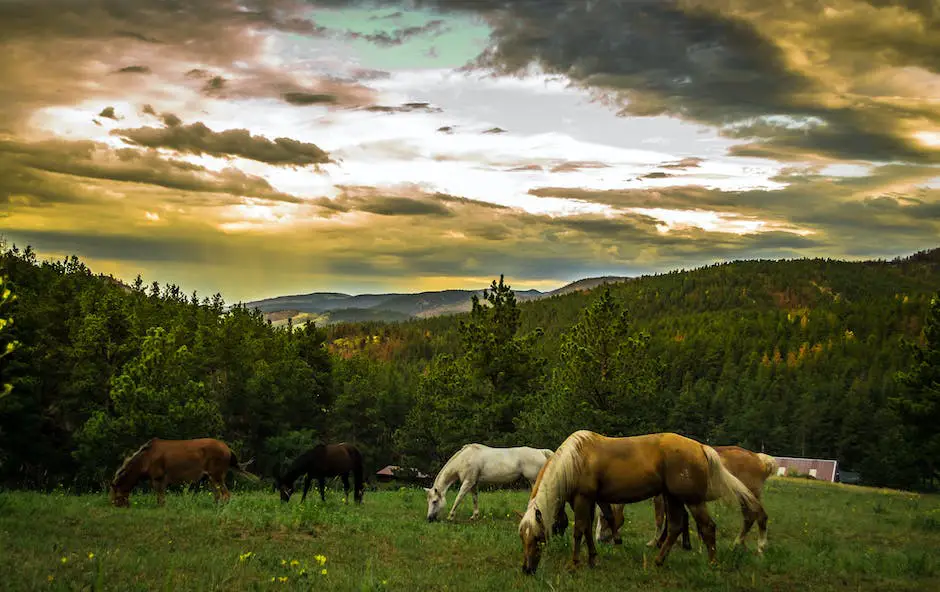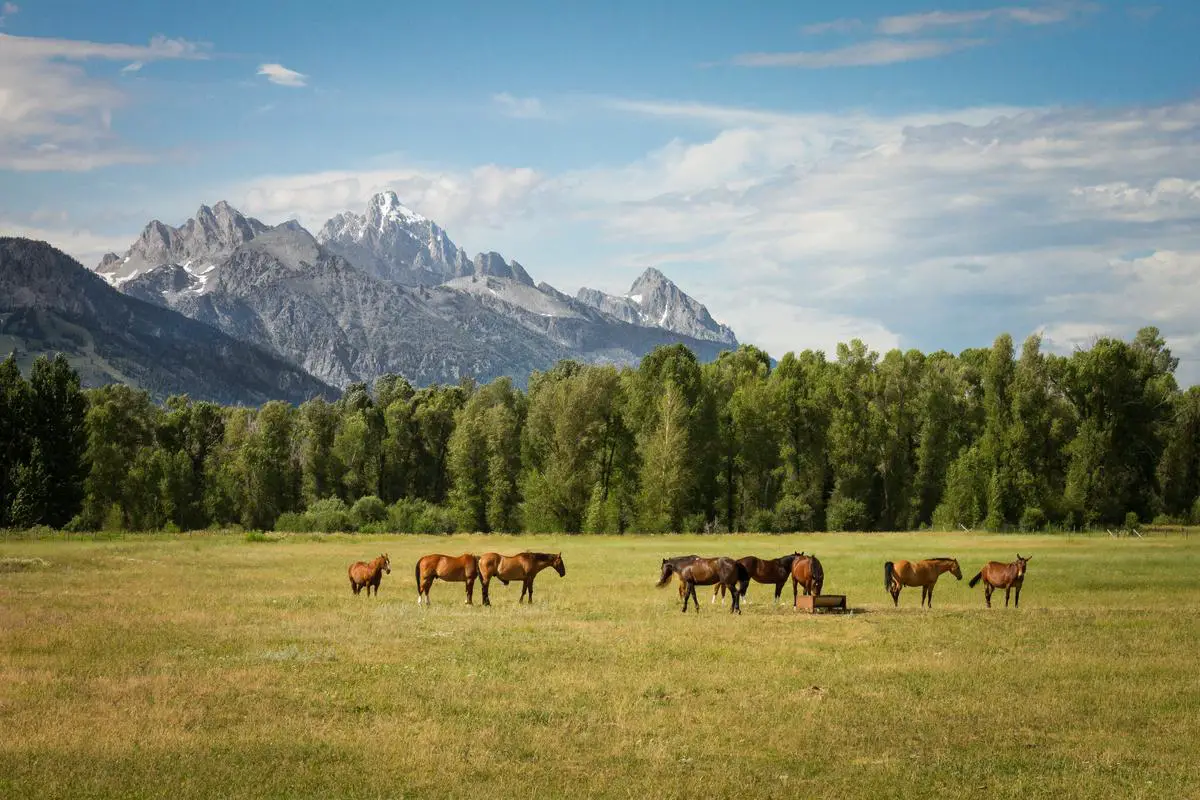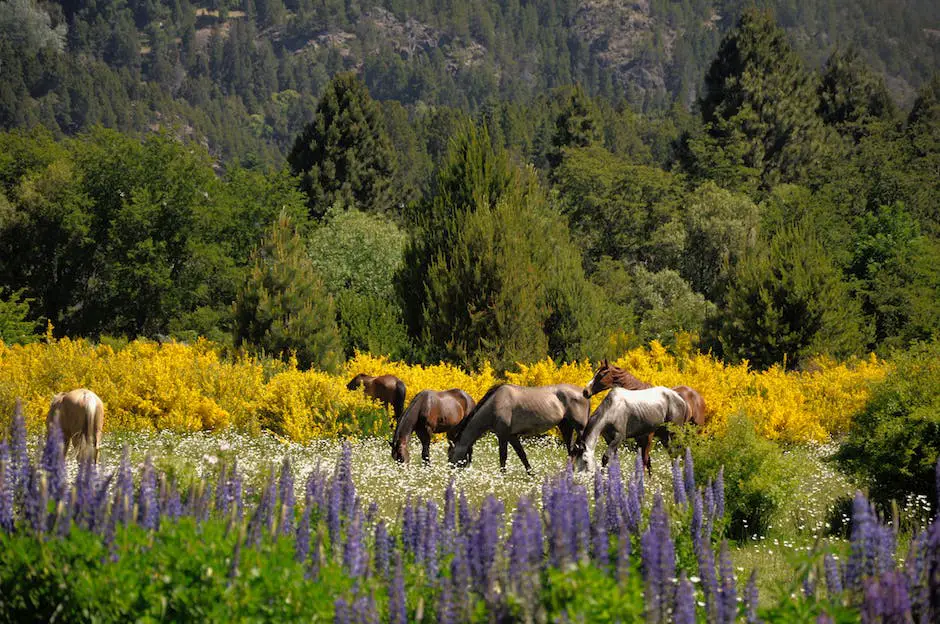Nestled in the heart of Europe, Switzerland is not only known for its majestic mountains and exquisite chocolates but also for its remarkable equine heritage. Swiss horse breeds, with their impressive lineage, have played a pivotal role in shaping the nation’s agricultural and military history. They’ve traversed the Alpine landscape with resilience, becoming an essential component of rural Swiss life. This essay embarks on a journey through time to explore the historical significance of Swiss horse breeds such as the Freiberger, examining their evolution and their enduring legacy as an integral part of Switzerland’s past and present endeavors.
Table of Contents (Horspedia)
Historical Significance of Swiss Horse Breeds
The Indelible Hoofprint: Swiss Horses in Historical and Agricultural Progress
In the annals of agrarian history, the Swiss horse breed, predominantly represented by the Freiberger, has played a pivotal role in shaping the agricultural landscape and historical development of Switzerland. Taxonomically known as Equus ferus caballus, these equine specimens exhibit a confluence of traits that have proven invaluable to both past and contemporaneous society.
Initially bred in the Jura region of Switzerland, the Freiberger horse emerged during the late 19th century through assiduous breeding practices. Farmers required sturdy, versatile workhorses that could maneuver the Alpine terrain with grace and durability. The admirable result was a medium-sized, docile horse, imbued with robust musculature and the quintessential disposition suitable for the multifarious tasks necessary in agrarian lifestyles.
In the context of historical progress, the contributions of Swiss horses are multi-tiered, fostering the development of rural areas and influencing agricultural production. Prior to the mechanization era, these horses were central to ploughing, hauling, and transporting goods—integral to the sustenance of agricultural economies. Their versatility extended to draft and riding purposes, embodying the agrarian duality of work and mobility.
The Swiss horse’s impact extends beyond mere muscle; it facilitated the social cohesion among farming communities. Before the advent of modern transportation, these equines were pivotal in connecting remote regions, which in turn, promoted trade and cultural exchange. Moreover, during both World Wars, these horses displayed commendable service, supplementing depleted mechanized forces in transportation and logistics.
Moreover, the historical integration of Swiss horses into the agricultural process has had profound implications for sustainable farming practices. As early adopters of organic and traditional farming techniques sought harmony with the natural environment, the Swiss horse stood as a bastion against the over-reliance on fossil fuels within agriculture.
In modern times, with the advent of technological advances in machinery, the role of the Swiss horse has inevitably diminished in direct agricultural application. Nonetheless, it remains an emblem of Swiss heritage, underscored by efforts for its preservation and the continuation of its lineage. Equine-assisted activities and therapies have provided a new avenue where these horses can contribute to society, offering therapeutic benefits and enriching the lives of individuals with physical, emotional, and developmental challenges.
Scientific inquiries into equine genetics provide insights into the adaptive traits of Swiss horses, offering a living repository of genetic information that has potential applications in the broader realm of equine husbandry and breeding strategies. Thus, the legacy of Swiss horses is not confined to the historical narrative; it is an ongoing conversation between past tradition and future possibility.
In conclusion, the significance of Swiss horses transcends mere historical curiosity—it is a testament to the intertwined destiny of human and equine. The historical and agricultural development of Switzerland is indelibly marked by the presence and contributions of these equine partners, a hoofprint that resonates through the annals of time and continues to influence the landscape in novel and adaptive ways.

Physical Characteristics of Swiss Horse Breeds
In discussing the physical attributes of Swiss horse breeds, a discerning analysis ushered upon the Freiberger illuminates these majestic equines’ distinctive physiology. Perhaps most salient is the breed’s robust constitution, a requisite for endurance through the alpine topography of its Swiss homeland. Morphologically, one can identify a Freiberger by its harmonious proportions, wherein the conformation reveals a compact, muscular build well-suited to engage with the undulating terrain and exacting climates.
The stature of the Freiberger is typically moderate—with heights ranging from 14.2 to 15.3 hands, a standard measurement distinctive to equine species—exuding a power essential for versatile farm work yet balanced with an agility that belies their strength. Their body is encased with a dense, glossy coat, often found in hues of bay, chestnut, or dun, which provides not only aesthetic appeal but also serves as a protective envelope against the inclement weather synonymous with their origin.
Upon examination of the head, a broad forehead presides—a mark of intelligence and amiability—with kind, expressive eyes that bestow upon them an approachable demeanor. The mid-size ears are set atop the head with precision, signaling alertness and attentiveness, traits indicative of a lineage forged in diligent labor. The mane and tail are traditionally lush, although not overly so, attesting to their working heritage where functionality presides over ornamentation.
A study of their hooves must not be overlooked, as these too are crucial elements of their physiological make-up. They manifest as hardy and well-formed, a natural adaptation enabling traversing of rocky paths and cobblestone pathways alike with equanimity.
The symmetrical alignment of limbs, coupled with well-developed joints and a deep chest, confers upon the Swiss horse breeds, particularly the Freiberger, the necessary foundation for stamina and resilience. When seen in motion, one cannot help but note how the rhythmic gaits and inherent balance are indicative of a creature molded through generations to meet the demands of both the land and its stewards.
Conclusively, these breeds, hewn by the hands of time and the needs of Swiss culture, are living manifestations of equine versatility and robustness. It is in their very sinews that the tales of Swiss history are woven, narratives rich with agricultural evolution and human-equine symbiosis, continuing to unfurl with each hoofbeat upon the soil of a nation well versed in the art of fusing necessity with majesty.

Behavioral Traits and Temperament
Behavioral Qualities of Swiss Horses: A Comparative Analysis
Noteworthy within the realm of equine studies is the exploration of behavioral characteristics that demarcate horse breeds, and in particular, Swiss horses exemplify a spectrum of qualities that are uniquely cultivated through both genetic inheritance and the cultural backdrop against which they were developed. Critical to this examination is the Swiss Freiberger, a breed that not only represents the epitome of Swiss equine versatility but also a treasure trove of peculiar behavioral attributes.
Foremost among the distinctive behavioral traits of Swiss horses is their temperament. Known for their calm and gentle demeanor, Swiss horses, especially the Freiberger, exhibit levels of patience and stoicism that are highly treasured in both agricultural work and equine-facilitated therapy. This can likely be attributed to their origin in a landscape that demanded consistent and reliable labor from these animals, where an erratic or skittish disposition would have been unfavorable.
Equally important is the Swiss horse’s proclivity for trainability. The very genesis of the Freiberger breed encompasses a mélange of uses, from draft purposes to riding, necessitating a high degree of intelligence and adaptability. Their eager-to-please attitude has historically made them suitable for a multitude of tasks, and this versatility remains salient in their modern utility. Unlike some of the more hot-blooded breeds, whose energy and alertness may be best suited for specific disciplines, Swiss horses inherently possess a wide-ranging functional capacity.
Additionally, these horses exhibit a noteworthy aptitude for bonding with humans. The Freiberger, in particular, is renowned for a sense of loyalty and connection to their handlers, which undoubtedly stems from their role in the tight-knit agricultural communities of Switzerland. This bonding capacity cements the Freiberger’s role as a reliable companion, essential for work that requires a sustained and close working relationship between horse and human.
Concordantly, the horses manifest remarkable work ethic, a trait deeply embedded in their historical role in Switzerland’s agricultural milieu. Tasked with demanding labor under varied climatological conditions, Swiss horses have developed an inherent willingness to engage in strenuous activity for extended periods. This work ethic is more than a mere physical ability; it encapsulates a behavioral predisposition towards perseverance and diligent effort.
Last but not least, the social dynamics within populations of Swiss horses warrant observation. Herd instincts, characterized by clear establishment of hierarchy and communal living, are exemplary within these breeds. The social structures that manifest among Swiss horses are not only a product of their innate characteristics but also reflect the collective practices of their Swiss custodians, who have long valued the harmonious integration of these creatures into their society.
In conclusion, the behavioral qualities that distinguish Swiss horses from others are multitudinous and deeply intertwined with Switzerland’s cultural, historical, and environmental context. Swiss horses, with the Freiberger emblematic of the breed’s preeminent characteristics, exhibit a suite of behaviors ranging from their calm temperament to a strong work ethic. These behavioral attributes mirror the very foundation upon which Swiss equine heritage rests and continue to underscore the enduring bond between the Swiss people and their cherished equine companions.

Photo by hollymandarich on Unsplash
Conservation and Breeding Programs
Conservation and Preservation of Swiss Horse Breeds: Modern Endeavors in Genetic Preservation and Selective Breeding
Adaptive Strategies in Conservation
Efforts to conserve Swiss horse breeds, notably the Freiberger, have adhered to both ex situ and in situ conservation measures. Ex situ conservation, predominantly involving semen and embryo storage, allows for genetic material to be preserved, ensuring that diversity within the breed is maintained for future generations. In contrast, in situ programs promote the maintenance and breeding of horses within their natural or adapted environments, safeguarding not only genetic stock but also the associated traditions and knowledge.
Breeding Programs and Their Implementation
Selective breeding programs are at the forefront of breed conservation. Initiatives, spearheaded by organizations such as the Swiss National Stud Farm (Haras National Suisse), are meticulously regulated, aiming to maintain breed purity while enhancing genetic diversity. Traits such as hardiness, temperament, and adaptability are prominent selection criteria. The studbook for the Freiberger, for instance, is rigorously curated, with comprehensive records and standardized performance and conformation tests that categorize equine participants for breeding suitability.
Regulatory Frameworks
The government and various equine federations have implemented regulatory frameworks that establish guidelines for breeding, husbandry, and the promotion of Swiss breeds. These regulations seek to balance breed standard preservation with the demands of modern usage. Policies support breeding practices that prioritize the health and well-being of the horse, ensuring that the process is ethical, sustainable, and aligned with international standards for animal welfare.
Public Awareness and Cultural Integration
Public engagement campaigns are integral in elevating the prominence and value of native horse breeds. Educational outreach, such as open days at stud farms and participation in cultural events, facilitates public access to and interaction with these horses. This not only fosters a collective understanding of the breed’s heritage but also imbues a sense of national pride and responsibility towards the breed’s preservation.
Research Collaboration and Funding
Interdisciplinary research collaborations have emerged as crucial elements in the conservation strategy. Geneticists, veterinarians, and ecologists work alongside breeders to generate data essential to informed decision-making. Genetic studies aim to identify markers for disease resistance and other desirable traits, while ecological research assesses the environmental impact and sustainability of breed conservation practices. These projects often benefit from public and private funding, signaling a recognition of the scientific and cultural importance of Swiss horse breeds.
Ecotourism and Heritage Programs
The implementation of heritage and ecotourism programs acts as a unique bridge between conservation and economic benefit. Agritourism initiatives that feature these breeds provide visitors with immersive experiences while fostering economic support for rural communities. Through such endeavors, the importance of Swiss horses is conveyed in an experiential manner, generating income that is reinvested into conservation and community development projects.
Integration into Modern Agricultural Systems
Modern agricultural systems have capitalized on the attributes of Swiss horse breeds by integrating them into organic and low-impact farming practices. These horses serve as living examples of sustainable agriculture, minimizing machinery use and fossil fuel dependence. Such approaches not only highlight the contemporary relevance of Swiss horse breeds in agriculture but also accentuate the potential value of equine labor in a landscape increasingly conscious of our ecological footprint.
Conclusion
Preserving the Swiss horse breeds, particularly the resilient Freiberger, remains an exemplar of how history, culture, and modern science can coalesce to achieve conservation goals. Through the collaborative efforts of the scientific community, breeders, governmental agencies, and the general public, these magnificent creatures continue to trot gracefully into the future, embodiments of Swiss legacy and stewards of a more sustainable world.

Swiss horse breeds represent a tapestry of traits and tales that are as varied and rich as the Swiss landscape itself. These equines have not only carved their hoofprints into the rugged terrains of their homeland but also into the cultural and historical narrative of the nation. With concerted efforts in conservation and breeding, we stand witness to the dynamic interplay between tradition and modernity, an interplay that ensures the legacy of Swiss horse breeds will continue to galvanize future generations, both within the serene valleys of Switzerland and beyond its borders.

